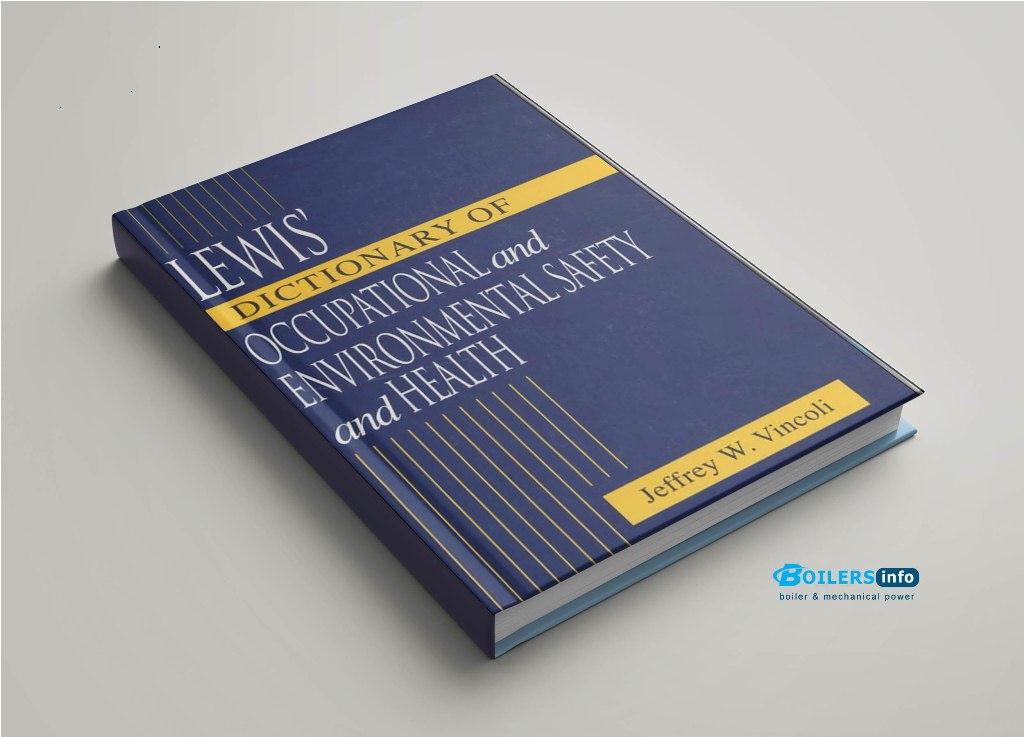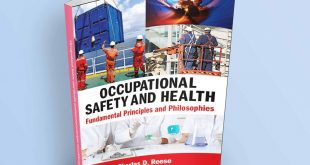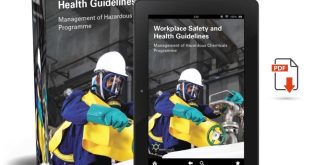📘 Dictionary of Occupational and Environmental Safety and Health: A Vital Resource for Safer Workplaces
In the ever-evolving landscape of industrial growth, technological advancement, and environmental challenges, workplace safety and health have become paramount. The Dictionary of Occupational and Environmental Safety and Health stands as a crucial reference for professionals, employers, employees, safety managers, engineers, and environmental scientists. This comprehensive dictionary not only defines key terms but also provides deeper insights into the concepts, regulations, and practices essential for creating safer, healthier workplaces and environments.

Importance of Occupational and Environmental Safety and Health
Occupational Safety and Health (OSH) focuses on preventing work-related injuries, illnesses, and fatalities by controlling hazards at the workplace. Similarly, Environmental Health emphasizes minimizing environmental risks that can affect human well-being. Together, these disciplines aim to protect people, property, and the planet.
A proper understanding of the language used in these fields is essential for effective communication, compliance with regulations, and the implementation of best practices. This is where the Dictionary of Occupational and Environmental Safety and Health becomes an invaluable tool.
What Does the Dictionary Cover?
The dictionary encompasses a wide range of terminology covering:
✅ Occupational Safety:
- Accident Investigation
- Hazard Identification
- Personal Protective Equipment (PPE)
- Safety Culture
- Risk Assessment
- Emergency Response
✅ Occupational Health:
- Ergonomics
- Industrial Hygiene
- Exposure Limits
- Occupational Diseases (e.g., Asbestosis, Silicosis)
- Psychological Hazards
✅ Environmental Safety:
- Air and Water Quality Standards
- Waste Management
- Environmental Impact Assessment (EIA)
- Sustainability Practices
- Climate Risk and Adaptation
- Workplace Health and Safety International Perspectives
✅ Regulatory and Compliance Terms:
- OSHA (Occupational Safety and Health Administration)
- EPA (Environmental Protection Agency)
- ISO 45001 (Occupational Health and Safety Management Systems)
- REACH, RoHS, and other global compliance frameworks
Key Benefits of Using the Dictionary
- Clarity and Understanding:
Safety professionals often work in cross-disciplinary teams where technical jargon can cause misunderstandings. This dictionary standardizes terms, ensuring everyone speaks the same language. - Regulatory Compliance:
Knowing precise definitions of terms used in laws, standards, and codes helps organizations maintain compliance and avoid penalties. - Training and Development:
Training sessions for safety awareness, environmental protection, and emergency preparedness can be enhanced by using consistent and accurate terminology from the dictionary. - Incident Prevention:
Understanding the definitions of hazards, risk factors, and control measures can directly contribute to better hazard recognition and prevention.
Why Is It More Relevant Today Than Ever?
With the rise of complex industries like renewable energy, biotechnology, and advanced manufacturing, as well as growing environmental concerns such as climate change and pollution, safety and environmental terms are constantly expanding. The Dictionary of Occupational and Environmental Safety and Health keeps pace with this growth, updating definitions to reflect current knowledge, standards, and technologies.
Additionally, the post-pandemic era has intensified the focus on workplace health, psychological well-being, and environmental sustainability, making this dictionary an essential tool for modern organizations.
Final Thoughts
Safety is not just a policy—it is a language, a culture, and a commitment. The Dictionary of Occupational and Environmental Safety and Health empowers individuals and organizations with the knowledge to foster safer workplaces and a healthier planet. By mastering the terminology, we take the first step toward a future where safety and sustainability are not optional but integral to every operation.
 Boilersinfo Boiler and Mechanical Power Digital Library
Boilersinfo Boiler and Mechanical Power Digital Library





